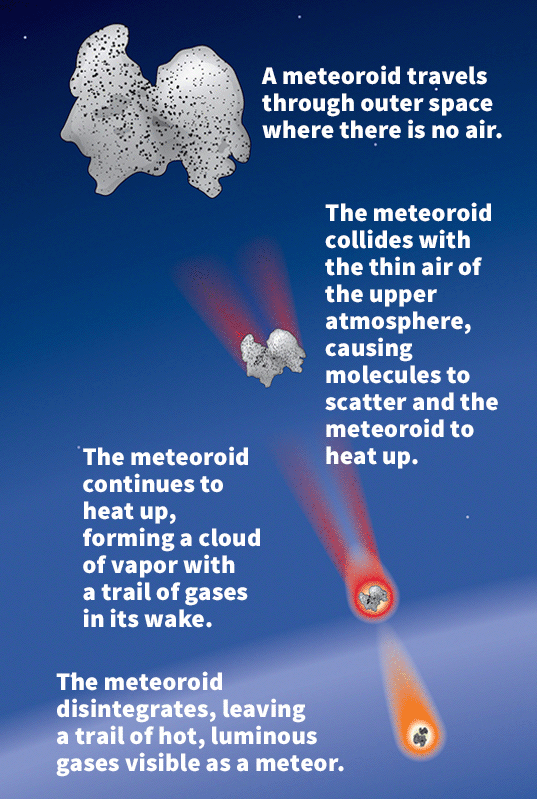Sky Show Tonight?
May 23, 2014
A brand-new meteor shower called the Camelopardalids makes its debut in Earth’s sky tonight. (That’s camel-oh-PAR-dahl-idz; kah-MEL-oh-PAR-dal-idz; or camel-oh-par-DAL-idz–your choice.) Skywatchers may be in for a thrill–from 30 to perhaps hundreds of meteors an hour streaking across the sky at the peak of the shower. However, because this will be the first Camelopardalid meteor shower, astronomers aren’t making any promises. Peak viewing time will be tonight from 1 a.m. to 3 a.m. Central Daylight Time (CDT), though falling stars could be visible as early as 9:30 p.m. CDT tonight and as late as 6:00 a.m. CDT tomorrow morning.
The meteor shower will be produced by grains of dust ejected from a small, dim comet known as 209P/LINEAR that was discovered in 2004. This comet has been orbiting between Jupiter and the sun about every five years since at least 1703, but this will be the comet’s first chance to strut its shooting-star stuff. The reason is that Jupiter has been slowly altering the comet’s orbit, and so this will be the first time that Earth will speed through the comet’s dusty tail. In fact, the dust that will produce meteors tonight was ejected by the comet 200 years ago. If the comet was shedding a lot of debris then, we might be in for spectacular celestial pyrotechnics.

A meteor appears in the sky when an object called a meteoroid enters the atmosphere from space. (World Book illustration by Greg Maxson)
Because the dust grains will be hitting Earth’s atmosphere at a relatively slow speed of about 12 miles (19 kilometers) per second, said astronomer Carl Hergenrother of the University of Arizona, Tucson, “They’re actually going to last maybe for a second or two. It’s going to look almost like slow moving fireworks instead of the usual shooting stars that we’re used to.” Hergenrother also observed, “Right before your eyes you’re seeing a grain of dust that was released from a comet hundreds of years ago that resided in that comet for billions of years. It may have even existed before the Earth existed, and there it is burning up right in front of you. So you’re watching a billions-of-years journey end right in front of your eyes.” (The comet itself will pass within about 5 million miles (8 million kilometers) of Earth on May 29.)
To maximize your enjoyment, NASA offers the following advice (assuming clouds don’t interfer with your view).
- Give your eyes time to adjust to the dark (about 10 minutes).
- Bundle up to stay warm.
- Grab some coffee, tea, or hot chocolate.
- Sit in a lawnchair or lay on a blanket or sleeping bag on the ground and point your feet toward the northwest horizon.
- Look up.
NASA meteor expert Bill Cooke will host a live web chat tonight from 10 p.m. to 2 a.m. CDT. Go to
http://www.nasa.gov/topics/solarsystem/features/watchtheskies/may-camelopardalids.html
a few minutes before the chat begins, then log in to ask your questions. A live Ustream view of the skies over Huntsville, Alabama, will also be offered on that page.


